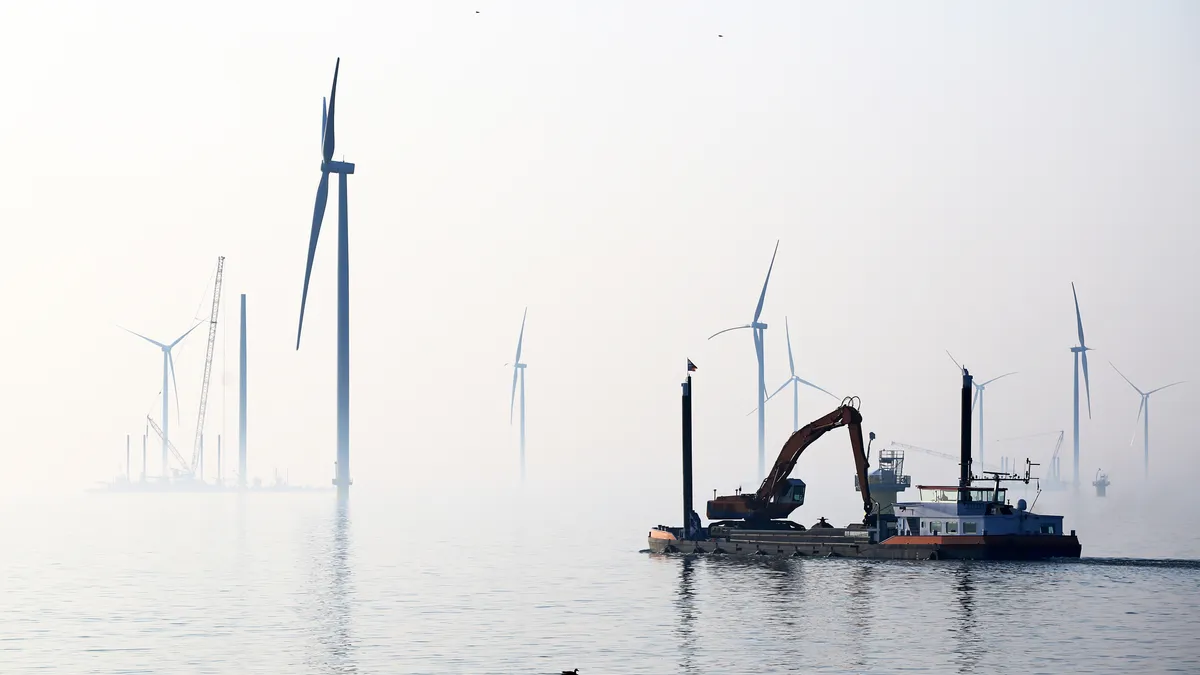Dive Brief:
- In a report released Wednesday, the Pacific Northwest National Laboratory models three generation and transmission scenarios for the grid integration of offshore wind energy into the Western Interconnection – estimating a potential for $6 billion in annual economic benefits.
- The first scenario models the connection of 3.4 GW of installed offshore wind capacity to the grid, and the second two scenarios look to optimize the siting of an additional 12.9 GW.
- Lead author Travis Douville said in an interview that his most significant takeaway from the research is the revealed opportunity for the West Coast to maximize the benefits of offshore wind with careful transmission planning.
Dive Insight:
The report “indicates that a choice in the way we link offshore wind plants [to the grid] directly impacts the overall value of that generation and transmission footprint,” Douville said.
The study was completed by PNNL, funded by the Bureau of Ocean Energy Management, and published by the National Offshore Wind Research and Development Consortium, or NOWRDC. It focuses on the maximization of electrical system benefits in southern Oregon and Northern California.
NOWRDC’s webpage for the report states that the ultimate goal of the report is for its outcomes to “guide state policy in Oregon and California and stand as a rubric for future grid integration studies in other regions of the U.S.”
The first scenario models the use of high voltage alternating current, or HVAC, to integrate the 3.4 GW of offshore wind that the Western Electricity Coordinating Council anticipates will be online by 2030.
“This is, in a way, piecing together a development pathway here,” Douville said. “You start with developing radial connections with known technology to nearby [points of interconnection] that are relatively less expensive. And then over time you merge to a larger Western Interconnection-wide benefit play.”
The next two scenarios examine the integration of that 3.4 GW plus an additional 12.9 GW after 2030. One models this through the use of high voltage direct current, or HVDC, and the other models the use of multi-terminal high voltage direct current, MTDC.
The MTDC scenario delivered the highest potential for net benefits – up to $6.1 billion a year – but higher upfront interconnection costs.
The study found that proactive transmission design could significantly mitigate offshore wind’s diminishing marginal value as installed capacity increases.
“The impact of transmission design on the overall system value resulting from a change in generation portfolio should be considered on multiple time horizons by planners and policymakers proactively to identify development pathways to long-term and wide-ranging net benefits,” the researchers said.
Oregon and California are coordinating on advisory work and studies, Douville said, but are “not really jointly planning at this point.
“That has a lot to do with the way the transmission system is planned in California,” he said. “It's not really planned with California and Oregon together. And that was one of the reasons for this study.”
In addition, an examination of the role Washington might play has just begun, Douville said.
“In our study, we did look at interconnections in Washington, and maybe this is one of the first studies to do that,” he said. “There's kind of a new wave coming out now – this study, and then a few others that are about to hit.”














